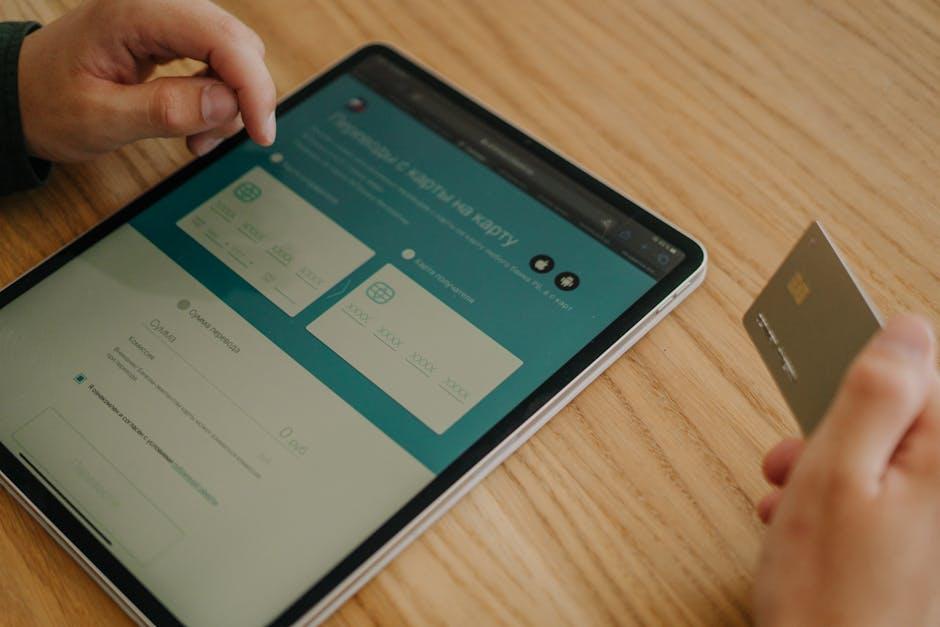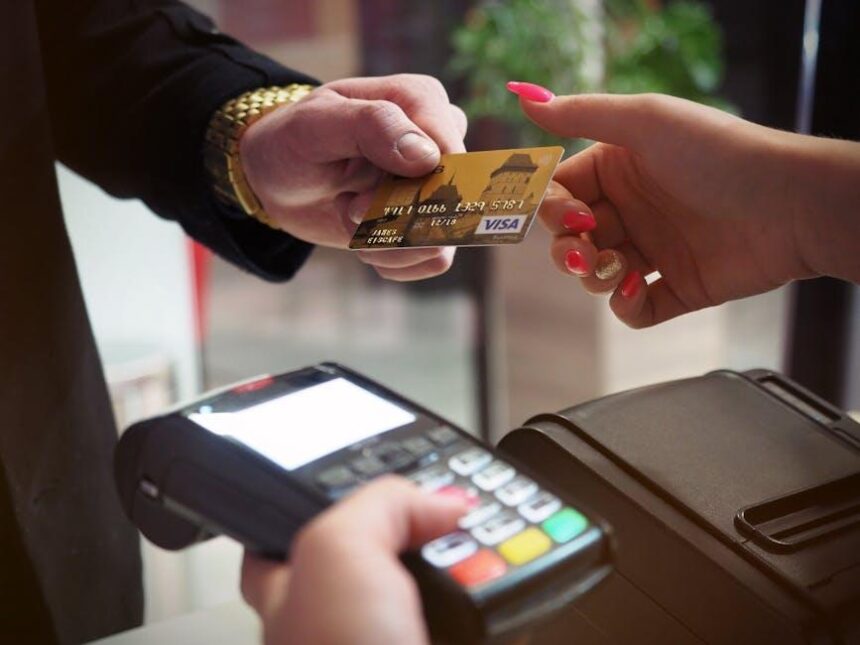In a world where credit cards can offer convenience but also lead to overwhelming debt, mastering the strategies for rapid repayment is essential for financial freedom. Whether you’re grappling with high-interest rates or juggling multiple balances, finding a clear path to eliminate credit card debt can transform your financial landscape. This article delves into effective techniques and proven strategies designed to help you take control of your finances and pay off your credit card debt swiftly. From consolidation methods to smart budgeting tips, we’ll guide you through actionable steps that can bring peace of mind and a healthier financial future. Let’s embark on this journey to financial empowerment together.
Strategies to Tackle High-Interest Rates Effectively
Facing high-interest rates on credit card debt can feel overwhelming, but there are effective strategies you can implement to take control of your financial situation. Here are some actionable tips to help you tackle those pesky rates:
- Create a Budget: Start by outlining your income and expenses. Determine how much you can allocate towards your credit card payments each month. This clarity will empower you to make informed decisions.
- Focus on High-Interest Cards First: If you have multiple cards, prioritize paying off the ones with the highest interest rates. Consider using the avalanche method, which saves you money in the long run.
- Negotiate Lower Interest Rates: Reach out to your credit card issuer and ask for a lower interest rate. Many companies are willing to negotiate, especially if you have a history of on-time payments.
- Consider a Balance Transfer: Transferring your high-interest debt to a credit card with a lower interest rate can save you substantial money. Look for cards offering promotional periods with 0% interest on balance transfers.
- Explore Personal Loans: If balance transfers aren’t feasible, consider consolidating your debt with a personal loan from a bank or credit union. These often come with lower interest rates compared to credit cards.
- Utilize Debt Management Programs: Nonprofit credit counseling services can provide structured debt management plans that consolidate payments and often secure lower rates.
- Avoid New Debt: While paying off existing debt, refrain from accumulating new charges. Using cash or debit can help you resist the temptation to swipe your card.
| Strategy | Benefits |
|---|---|
| Create a Budget | Increased clarity and control over spending. |
| Focus on High-Interest Cards | Maximized savings over time. |
| Negotiate Rates | Potential decrease in monthly payments. |
| Balance Transfer | Lower interest rates for certain periods. |
| Personal Loans | Simplified payments with lower rates. |
| Debt Management Programs | Structured repayment plans and lower rates. |
| Avoid New Debt | Preventing debts from accumulating. |
By implementing these strategies, you will find yourself better equipped to handle high-interest rates and ultimately reduce your credit card debt faster. Remember, each small step you take can lead to significant financial progress.

Creating a Personalized Debt Repayment Plan
is your roadmap to financial freedom. To effectively manage and eliminate your credit card debt, consider these tailored steps that fit your unique financial situation:
- Assess Your Total Debt: Begin by compiling a list of all your credit card debts, including the balances, interest rates, and minimum monthly payments. Having a clear picture helps in strategizing repayment.
- Establish Your Budget: Develop a budget that outlines your income and essential expenses. This will reveal how much you can allocate toward debt repayment each month.
- Prioritize Debts: Decide on a repayment strategy. You may choose to tackle the highest interest debt first (avalanche method) or the smallest balance (snowball method) to gain momentum.
- Negotiate Lower Interest Rates: Contact your credit card providers to negotiate lower interest rates. If you have a good payment history, they may be willing to accommodate your request.
- Increase Payments: Whenever possible, pay more than the minimum payment. Use bonuses, tax refunds, or any windfall to make larger payments on your debt.
- Implement Automatic Payments: Set up automatic payments to avoid missed payments and additional fees. This keeps you on track and helps build your credit score.
- Consider Balance Transfers: Look for credit cards that offer 0% introductory rates on balance transfers. While this can be a useful strategy, ensure you understand the fees involved and the rates after the promotion ends.
- Seek Professional Help: If your debt feels overwhelming, consider consulting a financial advisor or a credit counseling service. They can offer strategies tailored to your situation.
| Debt Repayment Strategy | Description | Best For |
|---|---|---|
| Avalanche Method | Pay off debts with the highest interest rate first. | Minimizing interest paid over time. |
| Snowball Method | Pay off the smallest debts first for psychological wins. | Building momentum and motivation. |
By structuring your repayment plan carefully and sticking to it, you’re not just paying off debt-you’re enhancing your financial literacy and preparing for a healthier financial future. Remember, every small step leads to significant progress!

Maximizing Your Budget for Faster Results
To gain traction in paying off your credit card debt, it’s crucial to maximize your budget effectively. Here are some strategies to help you allocate your resources wisely and achieve faster results:
- Create a Detailed Budget: Start by listing your income and all expenses. Use budgeting apps like Mint or YNAB (You Need A Budget) to visualize your cash flow.
- Identify Discretionary Spending: Analyze your spending habits to cut back on non-essential expenses. This might include dining out, subscriptions, or impulse purchases.
- Prioritize Debt Payments: Consider using either the snowball or avalanche method. The snowball method focuses on paying off the smallest debts first, which can boost your motivation. In contrast, the avalanche method targets high-interest debt to save you money in the long run.
- Automate Your Payments: Set up automatic payments for both minimum balances and extra payments on your highest priorities to avoid late fees and keep you on track.
- Utilize Balance Transfers or Consolidation Loans: Look into options offered by credit unions or banks like Discover or Chase. These can lower interest rates and simplify your payments.
- Take Advantage of Windfalls: Apply any unexpected income-like tax refunds, bonuses, or gifts-directly toward your debt.
Here’s a quick overview of how different types of expenses can be adjusted to free up funds for debt repayment:
| Category | Potential Savings | Suggestions |
|---|---|---|
| Dining Out | $50-$200/month | Cook at home, plan meals |
| Subscriptions | $10-$100/month | Cancel unused services |
| Entertainment | $20-$100/month | Seek free local events |
| Groceries | $30-$150/month | Use coupons, loyalty programs |
Implementing these strategies can significantly enhance your ability to pay off credit card debt faster. By making small adjustments, you can reclaim financial control and accelerate your journey to a debt-free lifestyle.

Leveraging Tools and Resources for Successful Repayment
Successfully paying off credit card debt requires a strategic approach, and utilizing the right tools and resources can significantly ease this journey. Here are some effective ways to leverage available resources:
- Budgeting Apps: Use tools like You Need a Budget (YNAB) or Mint to track your monthly expenses and income. These apps can help identify areas where you can cut costs and allocate more funds toward debt repayment.
- Debt Snowball or Avalanche Methods: Choose a repayment strategy that fits your financial situation. The debt snowball method focuses on paying off the smallest debts first, while the debt avalanche method prioritizes high-interest debts. Both have proven effective for different borrowers.
- Balance Transfer Credit Cards: Consider transferring high-interest debt to a balance transfer card with a 0% introductory APR. This can provide immediate relief and allow you to focus on paying down the principal without accruing additional interest.
- Financial Counseling: Seek assistance from reputable non-profit organizations like the National Foundation for Credit Counseling (NFCC). They offer free workshops and financial literacy resources, and their certified counselors can help design a repayment plan tailored to your needs.
- Payment Automation: Set up automatic payments through your bank or lender. This ensures that you never miss a payment, which can help maintain or improve your credit score while avoiding late fees.
- Cash-Back and Rewards Programs: If you use a credit card, choose one that offers cash-back or rewards points. However, use these cards wisely and pay off the balance each month to avoid interest charges.
- Personal Loan Consolidation: If you have several debts, consider taking out a personal loan to consolidate them. This often results in a lower interest rate and a simpler payment plan.
Here’s a simple comparison table to help you decide between various debt repayment strategies:
| Repayment Method | Pros | Cons |
|---|---|---|
| Debt Snowball | Boosts motivation by quickly eliminating small debts | Higher interest costs in the long run |
| Debt Avalanche | Saves more on interest over time | Requires more discipline to stick with longer payoff periods |
| Balance Transfer | Immediate interest savings | Potential transfer fees and rate increase after the introductory period |
| Personal Loan Consolidation | Single monthly payment, often lower interest rates | Fees may apply; requires good credit to qualify |
By effectively utilizing these tools and strategies, you can accelerate your journey toward becoming debt-free. It’s crucial to stay disciplined, make informed decisions, and regularly reevaluate your financial health.

The Conclusion
As you embark on your journey to master the art of rapidly paying off credit card debt, remember that every step you take is a step towards financial freedom. The strategies and tips shared throughout this article are designed to empower you with the knowledge needed to tackle your debt head-on. Whether you choose to implement the snowball method, explore consolidation options, or seek professional advice, consistency and discipline will be your greatest allies.
Embrace the process, celebrate your milestones, and don’t hesitate to adjust your approach as your situation evolves. By taking proactive measures, you’re not just paying off debt-you’re building a foundation for a more secure financial future. Start today, and transform your relationship with money one payment at a time. Your journey to financial wellness begins now!














